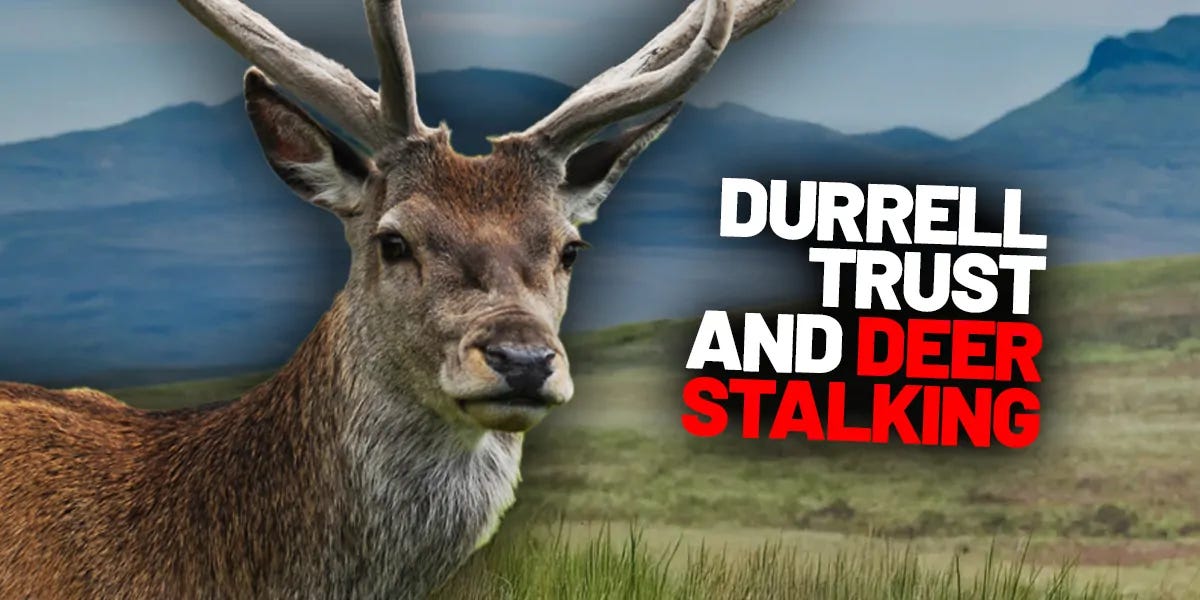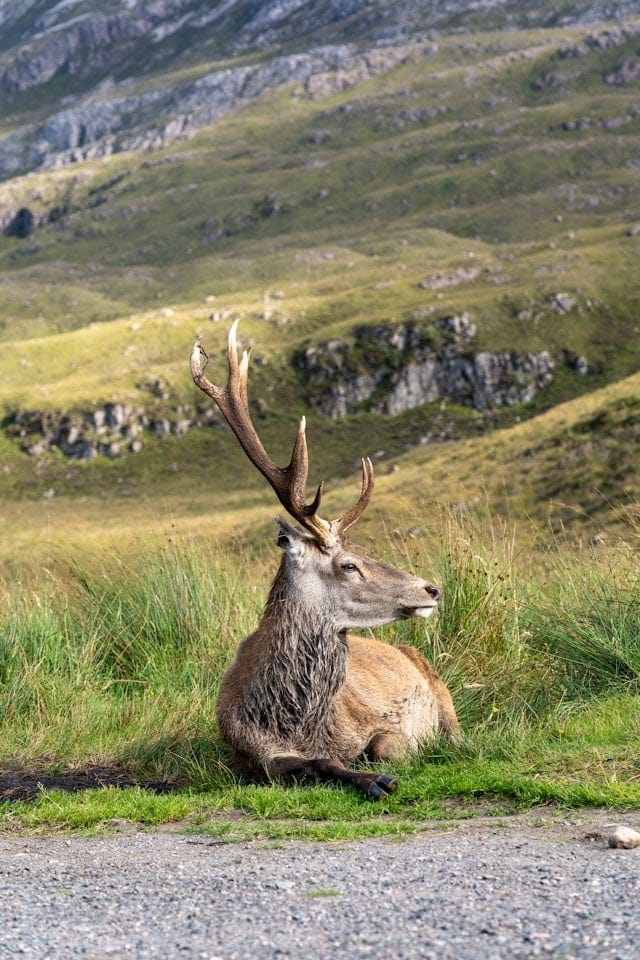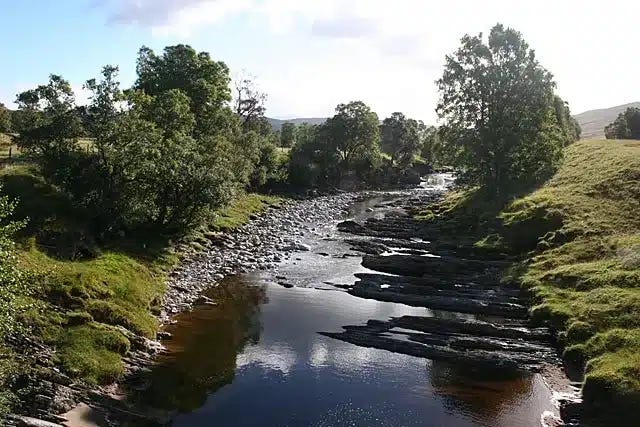When I was involved in Exotics work which included keeping an eye on Zoos and wildlife parks the Durrell Trust was one of the very few organisations I trusted. WAS
From Protect The Wild
Members of the Durrell Wildlife Conservation Trust (DWCT) have been pressuring the organisation to end its support for pay-to-shoot deer stalking on the Dalnacardoch Estate in the Cairngorms, which the Trust manages. DWCT’s leadership has just “unambiguously refused” to discuss a motion from Trust members calling for the issue to be debated at Durrell’s upcoming AGM in September.
The Trust recently performed several U-turns after its support for deer shooting at the Scottish Estate caused an outcry from its members and supporters. DWCT has since said that pay-to-shoot will end in November, but many Trust supporters say that is nowhere near soon enough.
The recent refusal of the Durrell trustees to listen to their members has garnered interest from the national mainstream media.
Durrell Wildlife Conservation Trust
Durrell Wildlife Conservation Trust is a well-known Jersey-based conservation charity founded by the popular late British author and naturalist Gerald Durrell. It has been involved in a rewilding project at Scotland’s Dalnacardoch Estate since 2023.
The Trust attracted controversy last year after former-Durrell chief executive Paul Masterton told the BBC that DWCT’s support for “trophy hunting and blood sport” at Dalnacardoch – where “people pay a licence fee where they stalk and kill animals” – was a sign that the Trust had travelled “far from its roots and its values”.
Scotland is a popular destination for blood sport enthusiasts from around the world, with some tourists paying £700 or more to kill a stag. Protect the Wild interviewed an anonymous conservation worker earlier this year who said that stags often suffer painful deaths when targeted by tourists. They said that: “amateurs are well known to inflict awful wounds and suffering on deer which then die slowly.”
Durrell Wildlife Conservation Trust recently bowed to public pressure and said it would end pay-to-shoot tourism at Dalnacardoch. However, the Trust said it planned to honour its bookings until 2026. After its supporters said this wasn’t good enough, Durrell made further concessions, releasing a statement saying that the last booking would be completed no later than November 2025.
But Protect the Wild and many Durrell Trust members maintain that this still isn’t good enough. The Trust is complicit in causing suffering to animals on its land and continuing to profit from it.
Lack of Democracy
In August 2024, Durrell members tabled a resolution for Durrell Wildlife Conservation Trust’s September AGM, as is their right. They proposed:
“That all Commercial Shooting for Pay, Blood Sports and Trophy Hunting, be stopped with immediate effect, on all Durrell Wildlife Conservation Trust owned or managed properties, including pay to kill hunting at the Scottish estate known as Dalnacardoch.”
But the Trust leadership refused to discuss the motion, using a recent change in the Trust’s rules to prevent the issue from being debated. Protect the Wild contacted Durrell’s media department to ask them why and they told us:
“We have already publicised our intention to stop paid stalking. The last contractual obligation for paid for stalking is on 20th October 2025 and bookings ceased to be taken before the End of Commercial Shooting Resolution was received.“
The Trust’s press spokesperson said that “the Trustees have unanimously declined to accept” the members’ resolution.
“Troubling message”
We spoke to Peter Brookes of ‘We Love the Zoo’, a grassroots advocacy group made up of concerned Durrell Wildlife Conservation Trust members and supporters. He expressed deep shock and outrage at the Trust’s refusal to engage with these issues. Brookes told Protect the Wild:
“Durrell have at last agreed to stop deer shooting for pay, although it is disappointing that they are committed to 30 more bookings until the end of October, allowing people to shoot deer for fun until 23rd of that month.
The trustees have “unilaterally” rejected a member’s resolution, that demanded shooting for pay stops immediately. By rejecting the legal resolution, most members will now not know that Durrell have been allowing this activity on trust land for the past two years. They have not given an answer as to how many deer have been shot for sport during that time.”
Lack of transparency
Protect the Wild asked the Trust’s press department to comment on the number of deer shot by tourist at Dalnacardoch since the Trust took over. They declined to answer.
Protect the Wild’s Rob Pownall also criticised the Trust’s decision not to listen to its members:
“By refusing to even discuss this motion, the Durrell Trust has sent a troubling message to its own members. Conservation should mean protecting wildlife, not selling the right to kill it. Members have raised a legitimate concern about pay-to-shoot deer stalking at Dalnacardoch, yet instead of engaging openly the Trust has shut the door on debate.“
Landowners in Scotland are legally obliged to carry out a deer cull and Durrell Wildlife Conservation Trust are saying that this will now be carried out by paid and trained staff.
However, former Trust employee Joya Ghose recently expressed in the media that DWCT should consider other options, including the reintroduction of apex predators which have become extinct in Scotland such as wolves and lynx. The member also expressed support for exploring contraception options for deer at Dalnacardoch as an alternative to a cull.
DWCT’s pledge to end trophy hunting at Dalnacardoch is to be welcomed, but it would never have come about without the concerted efforts of Trust members. However, the Trust need to end this cruel practice now, not carry it on for months to honour existing bookings. The fact that the trustees are prepared to countenance animal suffering for another two months reflects badly on the organisation’s respect for wildlife.
Read more about Deer and the Law on our Protectors of the Wild page here.
Read our original article calling out Durrell Trust’s shameful support for deer stalking
Durrell Trust are uniquely placed to advocate the reintroduction of predators at Dalnacardoch as an alternative to the cull which is being required by the Scottish government to manage deer numbers. Read more here.
River Garry at Dalnacardoch image via Anne Burgess (Wikimedia Commons), image of stag in the Highlands via Unsplash









